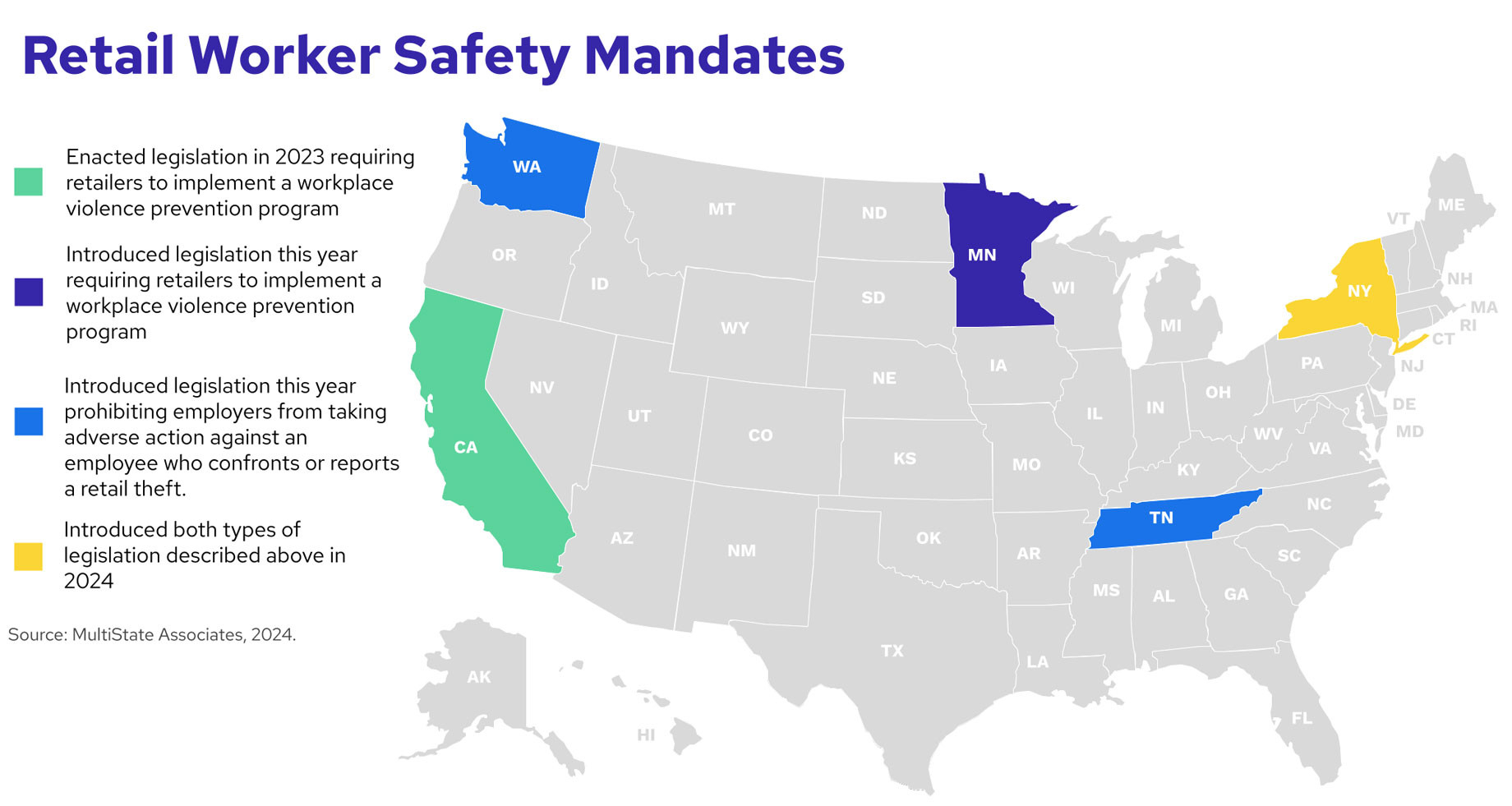As state lawmakers continue to advance solutions to crack down on organized retail crime, a new trend has emerged this year in legislatures that is focused on protecting retail store workers from violent theft. Proponents of these types of bills claim that retail store operators need to do more to protect their employees from violent criminal theft by mandating that retailers implement new workplace violence prevention plans and provide additional training for their store employees.
While these proposed bills may be well intentioned, most major retail outlets already have internal policies designed to protect their workforce and provide training for their employees on how best to handle suspected thieves. In addition, legislation focusing on retail worker safety may crowd out the importance of bills calling for tougher enforcement and penalties for retail theft.
In 2023, lawmakers in California enacted the nation’s first general workplace violence prevention requirements with Senate Bill 533. Starting July 1, 2024, nearly all California employers will be required to develop and implement a workplace violence prevention plan and provide training to their employees on the developed plan. The law also imposes recordkeeping requirements on employers, including an incident log for every workplace violence incident and its investigation. At present, Cal/OSHA, which is designated with enforcement of the new law, has not yet provided regulations or provided a specific timetable on the release of the new rules.
Other state legislatures appear to follow California’s lead and have introduced similar measures. In January, New York Senator Jessica Ramos (D) introduced retail specific legislation (SB 8358/AB 8947) that requires stores to develop violence prevention plans, employee training and similar reporting requirements. The New York bill goes further than California’s in two important ways: 1) the proposal mandates that retail stores that have been involved in violent attacks hire security guards and 2) it would require retail stores with 50 or more employees to install panic buttons within their store. Lawmakers in Minnesota have also introduced a bill (HF 3528) that closely resembles California’s enacted law but does not contain the two extra provisions from New York.
There are concerns that the new legislation will lead to increased litigation, additional operation costs, burdensome reporting and moreover, a patchwork of compliance as businesses deal with different states’ varying requirements.
Finally, a group of related bills has been proposed in 2024 that could add an additional layer of complexity to the issue of protecting retail store workers and decreasing retail theft. Lawmakers in New York (SB 7639 & AB 7976), Tennessee (SB 2575) and Washington (SB 5259) have introduced legislation that would make it illegal for an employer to take any adverse action against an employee who confronts or reports a retail theft. These proposals seem to be a reaction to the policies of many retail outlets who train employees not to intervene in active thefts for their own protection and safety. Most store operators understand that their employees are not trained in crime prevention and these sorts of interventions to deter crime could result in more harm to store workers.
